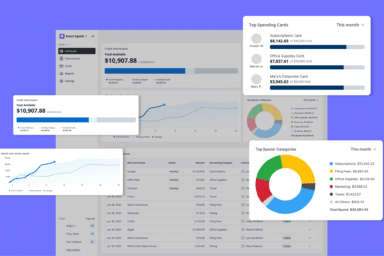Modernize Your Client Engagement Model to Meet Post-Pandemic Expectations
By Jared Correia
Oct 1, 2020
| 0 min read
Engagement is the key to making modern legal consumers feel comfortable about working with a law firm. And, that’s true at any stage of the client lifecycle, whether you’re seeking to convert a lead at the intake stage, better manage your relationship with an existing client or provide a former client with the appropriate prompt to send a referral your way. In each case, the principle remains the same (you must effectuate ways to stay in touch with legal consumers that relate back to their present need), even if the methods may differ. In this post, we’ll talk about how you should address legal consumers at each point of their involvement with your law firm.
Intake Management
If law firms fall flat on their faces in terms of legal consumer engagement, they fall the flattest at the intake stage. Law firms aren’t just bad at intake, they usually have no intake process to speak of. But, in the legal vertical, having an intake process is almost meaningless if it is not focused on engagement. Studies and experience clearly show that potential law firm clients are far more likely to become actual law firm clients when law firms establish intake systems built on engagement. Engaging clients means that you may even be able to lock in potential leads, with the chance to convert them, before they ever begin to look at other options. Data indicates that almost 90% of the time, a lead that is truly engaged by a law firm will decide whether or not to hire said law firm before contacting the next one. That’s a huge competitive advantage; but, it also underscores the need for a law firm to understand what engagement is, in this context, as well as how to effectuate it.
In essence, it is the answer to the question of whether you can create a conversational interface with your potential client. Notice my use of the word ‘interface’ — that’s because most lawyers view conversations as having to take place between one person and another — even if that’s not always the case. Certainly, there are some law firms that will focus on lawyer-consumer or staff-consumer conversations. In fact, there are law firms that are so focused on the consumer experience that they require attorneys to facilitate intake conversations. That’s, no doubt, extremely appealing to legal consumers, and will up your law firm’s conversion rate on new clients by a wide margin. Of course, it’s not realistic for every law firm, especially smaller law firms.
This post is an excerpt from The New Virtual Client Experience: How Law Firms Must Adapt. Download the full guide here.
Even the use of law firm staff for intake can be difficult to manage: paralegals and secretaries have important roles on the substantive practice side of law firms, and taking them away from those roles to put them on intake can seem a whole lot like robbing Peter to pay Paul. And, if that sounds like it would be the case for your law firm, using technology, potentially supported by vendor or contract staff, may be the best way to replicate that conversational environment, while reducing the cost of providing it. That’s why virtual receptionist services, live chat and chatbot services are becoming so popular for law firms — because it’s a way to have conversations with legal consumers, at a fraction of the cost.
But, don’t go too far down the technology-aided rabbit hole. Remember that what works is conversation. So, asking leads to drop information into a contact form, or to leave a voicemail message: that’s not super compelling. Even if you can’t have in-person conversations anymore, developing phone- and video conferencing-based analogues can meet the need.
Client Management
Lawyers are mostly so head-down on cases that they only lift up their heads when they have a substantive update for clients. That’s great, and all. But, it’s also important to stay in touch with your clients when nothing at all is happening on a case, which is what is going on the vast majority of the time. Lawyers, again, have a hard time placing themselves in the shoes of their clients; so, they’re not often thinking about what it would be like for someone to not be a lawyer, and to be involved in the legal process — in many cases, your client’s only experience with the law (like, for their entire life) will be with you. And, if you’re a legal consumer, prosecuting your only legal case for all-time with a lawyer who hasn’t done a particularly sterling job of explaining the legal process to you, and then is calling you for the first time nine months after he retained you with some information about the effect of an arcane statute on your case . . . well, you’d be confused, too. Not only that, you’d probably also feel like your lawyer is only interested in your case, and what you can pay him for, and not in you, personally.
Now, think of every other engagement that that consumer has in her life, and about how much more instantaneous (you buy something from Amazon, and get a receipt and delivery information via email, right away), then constant (you get consistent updates until the goods arrive), then personal (Amazon recommends additional purchases based on your browsing history) it is; then, think about how far away from that norm law firm customer service sits. So, as a law firm, you have to find a way to make sure that your client feels cared for — because everyone else is doing it, in every other industry. They all had a leg-up before the pandemic; and, those differences are only now more obvious.
What that means is that you need to check in (just like Amazon does), on a regular basis, even if nothing particularly Earth-shattering is happening at that moment. So, for a law firm, it’s important to schedule regular check-ins with clients, that aren’t case status updates. The easiest thing to do is to schedule a recurring check-in email or phone call. It can be as simple as asking how the client is, and that’s it. You can ask about the client’s daughter’s softball team, whatever. It’s all about staying in touch. Nothing makes a client feel more cared for than when you are not touching base to treat them as a commodity: here’s something that’s happened with your case/I need information about your case/I need money. Just ask about them, on a personal level, and leave it at. With an obviously open-ended communication valve of that sort, it’s also more likely that the clients will reach out directly (and proactively), if something case-related does come up. That’s what we call a win-win.
Related: [Blog Post] Now is The Time to Transition Your Firm From Premise-Based Legal Software to the Cloud
Post-Client Communications
Since lawyers are so hyper-focused on doing good work for clients, they ignore everything outside of substantive case updates. So, when the case is closed, it’s no surprise that a lawyer’s desire to communicate with the (now-former) client dies with it. Certainly, this has to do with the lack of substantive updates; but, it is also related to the fact that former clients are not direct revenue sources for law firms — which ignores the fact that more referrals generate from past clients than any other sources. That’s a pretty darn good source of indirect revenue.
For law firms that want to generate those referrals from past clients, there has to be reliance on more than just hope that they’ll remember the positive experience they had with your law firm. Like everyone else, your former law firm clients are inundated with information about products and services on a daily basis, and the notion that they will immediately come up with your contact information when a potential referral presents to them is foolhardy at best. You even need to engage these former clients, by figuring out a way to get their attention consistently, even when there are no more substantive case updates to provide.
But, there’s no rule that says you can’t call to catch up with a former client; and, maybe it’s not an every six-week cycle — like the one you should apply for existing clients — but, catching up every six months via phone is better than never doing so. You could also invite past clients to your office holiday party — just as you would other referral sources. If you’re using an email marketing tool to engage existing clients and other referral sources, curate a list of former clients, too — and, craft regular content that is particularly useful for them. Don’t forget to ask for referrals consistently, too. No one’s going to know you need them, or want them, unless you’re explicit about it.
—
This post is an excerpt from The New Virtual Client Experience: How Law Firms Must Adapt. Download the full guide here.


